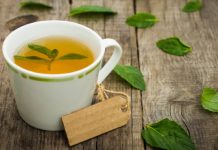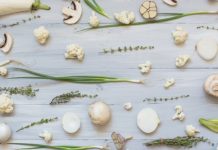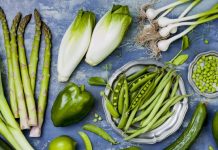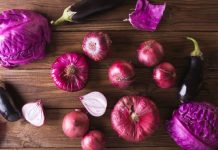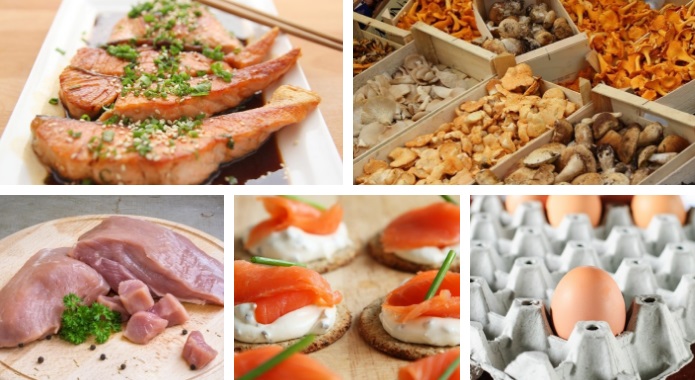
REMEMBER: These Are TOP 10 Foods High in Iron! Pay SPECIAL Attention to Food #6! These Tips Helped Over 3,000 Readers! Tips and Further Resources INCLUDED!
Reliable food sources of vitamin D are hard to come by. Surprisingly, only this vitamin can be produced by your body, which technically makes it a hormone.
It helps you absorb calcium, keeps the immune system healthy and also your insulin levels in check. Deficiency of this substance has been attributed to various health conditions, including inflammation, diabetes, and even certain cancers.
While the best way to obtain the recommended amount of this substance is through sun exposure, there are some foods that also contain this vital nutrient. Listed below are the top 10 sources you should try to eat.
Keep in mind: Mushrooms are the only vegetable that includes vitamin D in large quantities, while various other foods in this category have only trace amounts. Let’s take a look at the top vegetables.
Vegetable #1 – Mushrooms: Shiitake, Portobello, Maitake & Chanterelle
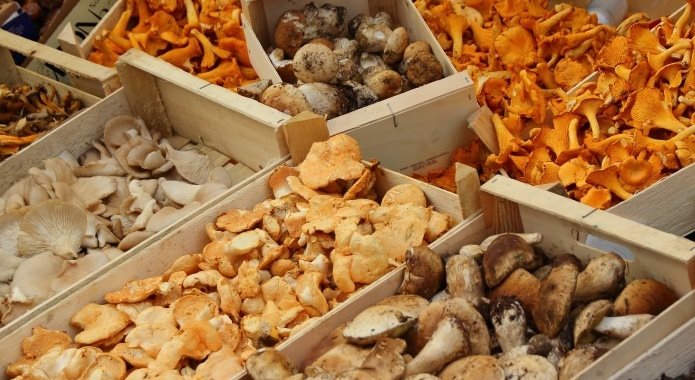
Vitamin D is difficult to obtain from plant sources, but mushrooms are an exception to this rule. However, the amount of this crucial substance you will get will largely depend on which type you consume!
The following varieties are great choices to begin with:
- Shiitake – 18 IU in a 100-gram serving (4% of the RDA).
- Portobello – 10 IU in that same amount (2%).
- Maitake – 1,123 IU (280%).
- Chanterelle – 212 IU (53%).
The way in which you prepare these mushrooms will also have an effect on quantities of vitamin D you will obtain. Just remember that any mushroom should be handled with care and cooked properly for safe consumption!
Vegetable #2 – Kale (in Form of Fortified Drink)
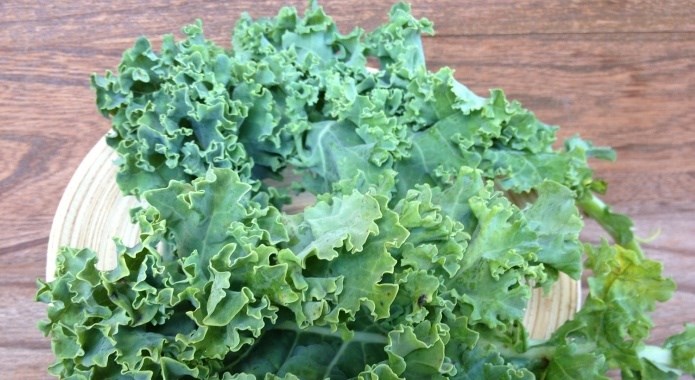
Kale is a nutritional superfood, but it only contains trace amounts of Vitamin D. Nevertheless, it should be included in any healthy diet to help reach the daily recommended quantities of all vital nutrients.
You may be able to obtain vitamin D from fortified kale drinks sold in stores, such as vegetable juices. However, these tend to be full of artificially added sugar, which may not make these a worthwhile source.
Vegetable #3 – Spinach (in Soufflé with Eggs)
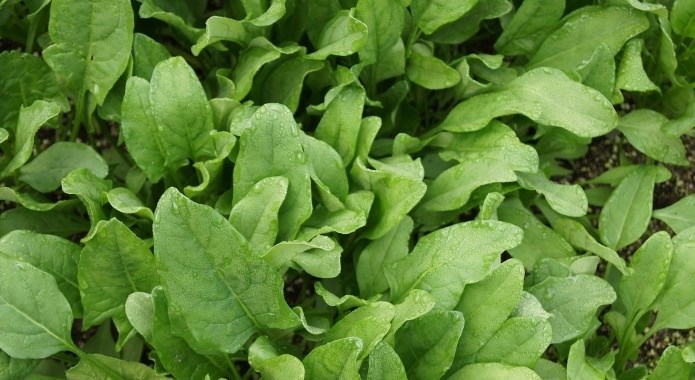
Much like kale, spinach only contains trace amounts of vitamin D. No matter the serving size, it includes 30 IU. Thankfully, when paired with an omelet or a dairy source, you can increase the D content of your meal!
Pay attention: If you will have a spinach souffle, then you can count with 34 IU in a one cup portion (8% of the RDA).
Vegetable #4 – Potatoes (Mashed with Fortified Milk)
Potatoes are an excellent source of vitamin C, B6, magnesium, and potassium, but they do not contain any D. Mushrooms are the only plant-based food that actually provides significant quantities of this vital substance.
That being said, you can pair your potatoes with eggs and mushrooms to create a frittata that has a fair quantity of D. Or you can eat them mashed and mixed with fortified milk. The choice is yours!
Keep in mind: Much like vegetables, very few fruits contains reasonable quantities of this nutrient. There’s only one on our top list – the orange.
Fruit #5 – Orange (in Form of Fortified Juice)
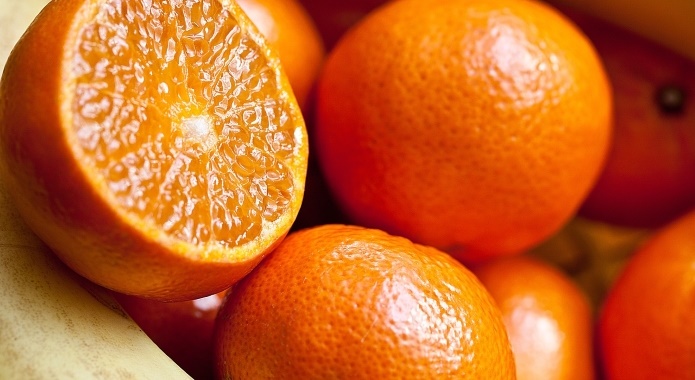
Fresh, raw oranges will provide you with plenty of vitamin C and many other essential substances and minerals. However, it will not give you significant amounts of D.
The more effective way to obtain vitamin D from oranges is through fortified juice products. A cup of fortified juice will give you around 137 IU (34% of RDA). However, check out individual product labels as these numbers may vary from one brand to another!
Pay attention: Animal products are the best food source of this nutrient. There are several options to choose from, but some contain higher amounts of D than others.
Animal Product #6 – Fatty Fish Meat: Salmon, Tuna, Sole & Flounder

Fatty fish is an excellent food. In fact, it’s one of the richest sources of this essential substance in the animal product category. The following fatty fishes are great choices:
- Salmon – While farmed salmon still provides decent quantities, wild one is the absolute best source! A 3.5oz serving of wild salmon includes 988 IU (more than 200% of the RDA), while the farmed one only 245 IU (more than 50%).
- Tuna – A 3-oz portion gives 59 IU, which is 14% of the RDA.
- Sole & Flounder – A 3-oz serving provides 51 IU, which represents 13%.
Whenever possible, choose wild-caught fish, or one that was responsibly farmed. This not only increases its D content but also ensures that you’re choosing environmentally-friendly options!
Animal Product #7 – Fortified Milk
Nearly all milk sold in stores is voluntarily fortified with vitamin D. An 8oz glass will provide you with 120 IU, which is about one-third of the recommended daily amount. If you choose a low-fat variety, this equates to only 400 calories!
It may come as a surprise, but unless it’s fortified with it, yogurt does not contain significant measurable amounts. Cheese, on the other hand, does. For example, 100-grams of cheddar cheese includes 24 IU of D, which is about 6% of the RDA.
Animal Product #8 – Eggs

Eggs are an excellent source of vitamin D. However; not all are created equal. Some give you more than others:
- Chicken – Just two large chicken eggs will give you 87 IU (21% of the RDA).
- Goose – One raw goose egg contains 95 IU (about 23%). These also have 409% of recommended daily quantities of cholesterol, so consume with caution!
- Quail – One quail egg contains just 5 IU, but these are especially small. A 100-gram serving will provide you with 55 IU, a much more respectable amount!
The way in which you prepare them can also have an effect on a content of this substance. For example, boiled and scrambled eggs have more D in themselves than poached ones or an omelet. This may be because the direct exposure to heat damages some of its healthy nutrients!
Animal Product #9 – Pork
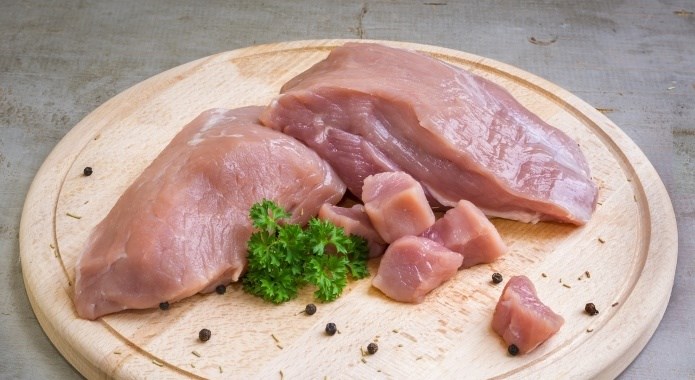
Pork is another great meat worth eating to avoid vitamin D deficiency.
- Just one 219-gram serving of chops (with bone in) contains 88 IU of vitamin D (approximately 20% of the RDA).
- A pound of pork loin includes about the same amount.
- Tenderloin, on the other hand, provides approximately 51 IU.
While pork may not be the most impressive source of this vital substance, it’s still a fantastic choice, especially when paired with other stuff from this list!
Animal Product #10 – Beef Liver
It may not be the most appealing food, but beef liver is still an excellent source of vitamin D. Just a 3.5oz serving has 50 IUs of D along with many other nutrients, like protein and iron. However, it is high in cholesterol, so be cautious about quantities you will consume!
These vitamin D-rich foods can help you reach your recommended daily amounts of this vital nutrient.
Just keep in mind that animal products are the best sources, and mushrooms are the only vegetables that contain significant quantities of this vitamin. Pairing these foods with modest, smart sun exposure can help ensure that a deficiency is never an issue for your body!


